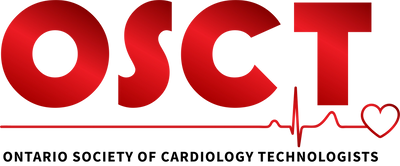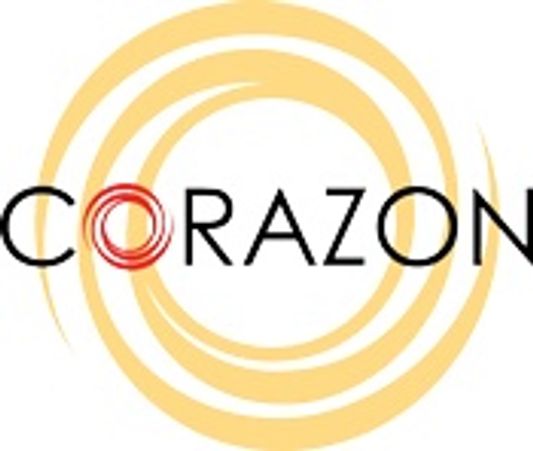Have a wonderful fall from all of us at O.S.C.T.

New C.E.U. Guidelines & Forms 2023
New C.E.U. Guidelines & Forms for 2023 are now available for download
3 New Articles Studies
2023 HRS expert consensus statement on the management of arrhythmias during pregnancy.
Top 10 take-home messages
1. The most common arrhythmias seen in pregnant patients are generally benign, including sinus arrhythmia, supraventricular tachycardia, and premature beats, whereas life-threatening arrhythmias, such as hemodynamically significant supraventricular tachycardia or ventricular tachycardia, are significantly less common...
Please see Downloads Tab for full Articles ceu credits
Sudden cardiac death in the young—Can illicit drug use explain the unexplained?
Sudden cardiac death (SCD) is defined as a natural and unexpected death, occurring often as first manifestation of an underlying unknown cardiac disease or predisposition, in subjects considered “healthy.” SCD causes 50% of all the cardiovascular deaths.1 Although it is rare in the young,2 the tragic event is associated with devastating consequences for the family and for the community. Investigation of causes of SCD is of great interest to be able to prevent further fatal events in family members and to identify subjects who may need a primary prevention implantable cardioverter-defibrillator...
Please see Downloads Tab for full Articles
Prevalence of illicit drug use in young patients with sudden cardiac death
Sudden cardiac death (SCD) is a leading cause of mortality, causing approximately half of all deaths from cardiovascular disease.1 Under the World Health Organization definition, SCD is traditionally defined as sudden unexpected death either within 1 hour of symptom onset or in patients found...
Please see Downloads Tab for full Articles ceu credits
Why CEU's

Support where you need it
A self-governing body, the OSCT admits and revokes membership in the Society and encourages all members to maintain professional standards by participating in a Continuing Education Units (CEU) system. With technology advancing so rapidly, the OSCT is working to upgrade and maintain national professional standards in the field of Cardiac testing. Today we have over 1100 Associate and Registered members in Ontario, Canada.
CEU Information

CEU Guidelines
1. Members will be randomly audited within one week of the end of each triennium (Between January 02-09th of the year following the triennium end date of December 31st, 2025**). A notification email will be sent notifying the member of the audit and a request for specific documents i.e certificates of attendance, transcripts, etc. The deadline to submit these documents will be 7 days from the date of the request.
2. Only CEUs accumulated and submitted during the current triennium will be accepted except indicated carry over activities
3. Members are responsible for keeping originals of all documentation in case the OSCT BOD requests they be submitted. CEU’s will NOT be retained in member profiles or by the OSCT.
4. Members must fill out the appropriate CEU submission form(s) and retain this information, upon official notification of an audit by O.S.C.T. . Forms will be available on the osct.ca website. * Please Do NOT upload C.E.U.'s to your Profile!*
5. Job requirements may not necessarily meet the criteria for CEU’s i.e. WHIMIS, code review, EMR software training etc. Activities involving cardiology equipment are eligible for CEUs, however further information may be requested.
6. In the event a member disagrees with an audit decision, a review request form must be filled out and sent to education@osct.ca.
7. Carry over activities can only be carried over once to the next triennium.
8. Members who are on parental, medical leave or facing extreme barriers to completing CEUs during the triennium must submit an accommodation request to the education director for review and approval by the OSCT board of directors prior to the end of the triennium.
Respectfully submitted,
Blair Arnold
OSCT President
Member approved CEU Standards for the 2023-2025 Triennium ceu credits
Other CEU Opportunities

UPCOMING CONFERENCES:
Who: HEARTS Tech
What: ECG interpretation for Cardiology Technologists
Where: Zoom
When: March 8, 2025
How much: TBD
CEU Credits:
Course approved by the Ontario Society of Cardiology technologists for 5.5 CEUs.

UPCOMING CONFERENCES:
Who: Connect Wellness
What: Webinar: Heart Disease
Where: https://www.eventbrite.com/e/connect-wellness-webinar-heart-disease-tickets-1138534580579
When: Wednesday, February 12, 2025, at 12:00 PM EST
How much: TBD
Description: Hosted by Capital Blue Cross Connect Virtual, this webinar will cover prevention, symptoms, treatment options, and more related to heart disease.
CEU Credits:
Course approved by the Ontario Society of Cardiology technologists for

UPCOMING CONFERENCES:
Who: Corazon, Inc.
What: Webinar
Where: https://register.gotowebinar.com/register/9167655829004259415
When: Wednesday, February 26, 2025, at 12:00 PM EST.
How much: TBD
Description: Corazon, Inc. will explore the latest advancements in electrophysiology and heart failure treatment, providing healthcare professionals with insights into current trends and future directions in these critical areas of cardiology.
CEU Credits:
Course approved by the Ontario Society of Cardiology technologists for

UPCOMING CONFERENCES:
Who: Massachusetts General Hospital
What: Heart Disease: What You Need to Know
Where: https://www.massgeneral.org/assets/mgh/pdf/blum-center/feb-2025-heart-disease.pdf
When: Wednesday, February 19, 2025, from 12:00 PM to 1:00 PM EST.
How much: FREE
Description: Dr. Sanchita Singal Parulkar from Massachusetts General Hospital will review the epidemiology of heart disease, contributing risk factors, and strategies to optimize heart health. The session is free and open to the public.
CEU Credits:
Course approved by the Ontario Society of Cardiology technologists for

UPCOMING CONFERENCES:
Who: American College of Cardiology
What: podcasts, self-directed learning, videos, quizzes
Where: ACC Online Courses - American College of Cardiology
When: On Demand
How much: Variable
Description: ACC Online Courses offer the cardiovascular community a collection of resources and newly developed, evidence-based educational activities across topics such as lipid management, valvular heart disease, CVD and influenza vaccine, SGLT2i's, and cardiomyopathies.
Stay up to date on the latest science and guidelines and learn at your own pace through various learning formats including infographics, expert videos, podcasts, and interactive learning modules.
CEU Credits:
Course approved by the Ontario Society of Cardiology technologists for

UPCOMING CONFERENCES:
Who: PriMed
What: Free Cardiology CME/CE Courses
Where: https://www.pri-med.com/topic/cardiology-cme
When: On Demand or in person
How much: Variable
Description: Developed in consideration for your increasing workload and educational needs, our free online and in-person CME provides the most up-to-date clinical insights to ensure you are prepared to tackle your patients’ needs.
CEU Credits:
Course approved by the Ontario Society of Cardiology technologists for

UPCOMING CONFERENCES:
Who: Mayo Clinic
What: Success with Failure: Strategies for the Evaluation and Treatment of Heart Failure
Where: In Person July 24-July 26, Banff, Alberta
Or
Livestream at:
When: July 24-July 26
How much: Price: $875 - $950 | Register by 6/24 to save $100!
Description: This course will provide the latest insights into the evaluation and management of heart failure. The course will cover cutting-edge diagnostic tools, novel medications, and advanced devices, along with their application in various clinical scenarios. A key focus will be the integration of current guidelines with clinical management strategies to optimize patient care. The program will feature engaging, interactive case-based discussions and incorporate both surgical and medical perspectives, ensuring a dynamic and relevant learning experience for all participants. This course is designed to enhance participants' ability to deliver evidence-based, guideline-directed therapies and improve outcomes for patients with heart failure.
CEU Credits:
Course approved by the Ontario Society of Cardiology technologists for

UPCOMING CONFERENCES:
Who: Mayo Clinic
What: Frontiers of Multimodality Imaging Including Echo, Cardiac CT and MRI
Where: In Person Fairmont Chateau Whistler
4599 Chateau Boulevard, Whistler, BC, CA V8E 0Z5
Or
Livestream
When: presented live in-person in Whistler, BC and also is available via livestream Pacific Daylight Time (PDT). When registering you will be required to choose in-person or livestream.
How much: Price: $785 - $985 | Register by 6/23 to Save $100
Description: This symposium is a comprehensive review of state-of-the-art echocardiography, nuclear, cardiac CT, and MRI for a wide variety of cardiovascular disorders. We will emphasize new technologies and how to use imaging information for the care of your patients. Integration of Echo, CT, and MRI and their incremental value in clinical cardiology will be highlighted. An additional focus will be on the role of 2-D and 3-D echocardiography in guiding interventional therapies.
Unique to this course is live scanning of patients with various CV disorders. This session will emphasize the importance of comprehensive echocardiographic acquisition and management decision based on echocardiographic data.
CEU Credits:
Course approved by the Ontario Society of Cardiology technologists for

UPCOMING CONFERENCES:
Who: Canadian Cardiovascular Society
What: Canadian Cardiovascular Congress
Where: In Person, Quebec City, Quebec
When: October 23-26, 2025
How much: Variable
Description: The annual Canadian Cardiovascular Congress (CCC) meeting is hosted by CCS and includes participation of more than a dozen health organizations.
The CCC is the largest gathering of cardiovascular and other health professionals in Canada. This event brings together the individuals who work across the spectrum of cardiovascular health – from research to patient care – and stimulates interaction within the cardiovascular community. It is a forum to showcase the best research and to promote learning, through scientific sessions, interactive workshops, late-breaking clinical trials, and lively debates.
The 2025 Canadian Cardiovascular Congress will take place October 23-26 at the Centre des congrès de Québec.
Visit cardiocongress.ca to access details about CCC 2024, including On-Demand content and certificates of attendance. Information about CCC 2025 will be available soon.
CEU Credits:
Course approved by the Ontario Society of Cardiology technologists for
Free CEU Links

Visit Clinical Care Options for free cardiology education! They have podcasts, case studies, slide decks, studies, clinical theory, conferences, and much more! Did I mention, it’s free? Complete these activities and then complete the CEU Submission Form for earn CEUs!

Check out the Cardiology Digest podcast series from Medmastery on your favourite streaming platform! For a monthly or annual fee, they also offer interactive workshops in cardiogenic shock, ECG, Holter monitoring, heart failure, ICDs, and many more hot cardiology topics

Webinars, podcasts, articles, videos, and journals! For free!

Over 4 hours of on-demand webinars with accompanying slides discussing heart failure management, device therapy, screening and diagnostics, and the Heart Failure Guidelines update!
Heart Failure webinar series: https://ccs.ca/heart-failure-webinar-series/
Cardio Connector Podcast: https://ccs.ca/cardio-connector-podcast/
Atrial Fibrillation webinar series: https://ccs.ca/atrial-fibrillation-webinar-series/

Canadian Association of Cardiovascular Prevention and Rehabilitation
Several on-demand webinars, conferences, and modules available!
Click Here:
Cookie Policy
This website uses cookies. By continuing to use this site, you accept our use of cookies.
